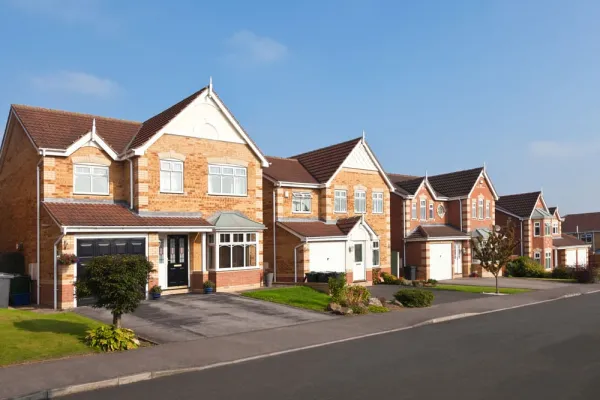Adding a property to a national list helps to preserve its appearance and history.
This ensures that needless changes aren’t made which ruins its significance.
If you own a listed building, you’re probably wondering what you can do to it.
We’ve explained everything in the blog below.
What is a listed building?
A building gets ‘listed’ in the United Kingdom if it’s considered to have historical or architectural importance.
This is usually because something significant has happened there. Or maybe it contributes to the aesthetic of the local area, which the government wants to preserve.
Applications for a building to be listed are submitted to the Historic England organisation.
Those that are accepted are then added to a national list by the Secretary of State for Culture, Media and Sport (DCMS).
Listed building categories
There are three categories of listed buildings:
- Grade I – buildings with ‘exceptional interest’
- Grade II* – buildings with ‘special interest’
- Grade II – buildings with ‘particular importance and outstanding features’.
In total, there are more than 370,000 listed buildings across the UK. Around 2.5% are Grade I, 5.8% are Grade II*, and 91.7% are Grade II.
When a building gets listed, it’s typically because the local government, the owner, or the nearby residents, don’t want its appearance to change.
This can involve limitations about alterations you can make to the property.
This applies even if you own it, and you’ll buy the building aware of this, assuming your solicitor or surveyor has correctly informed you.
What can you do to a Grade I listed building?
You’ll need to get permission from the local authority before you make any changes to a Grade I listed building.
They will give you a Listed Building Consent if they agree to your request. This usually follows an in-person visit to discuss the changes.
Significant features
In many cases, the aspect of the most ‘significant’ aspect of the property will determine what you’re allowed to do.
For example, if your building is listed for its external appearance, you probably won’t be allowed to change the exterior.
Similarly, if a specific room inside the building had a momentous event, you often won’t be allowed to change it.
Cultural issues
Remember that around 45% of all Grade I listed buildings are places of worship. You’ll thus need to consider cultural sensitivity when changing these properties.
Local communities and groups – especially those that use the place to worship – will undoubtedly want input. You can’t do anything that affects the sacredness of the building.
By making changes to a listed building without permission, you can be forced to reverse the changes. You’ll have to pay for this.
What can you do to a Grade II* listed building?
The process for making changes to a Grade II* listed building is the same as a Grade I property.
You’ll need to apply to the local council for permission. They’ll be sensitive to maintaining the building’s appearance and significance.
They’ll be reluctant to approve any changes that compromise this.
What can you do to a Grade II listed building?
You usually find that local authorities are more lenient about making changes to Grade II listed buildings.
Over 91% of listed properties are in this category. And most of them need to be more well-known and aesthetically significant.
It could be granted if you suggest changes that steer clear of the main points of interest.
Delisting
As a second suggestion, it could be worth applying to get it delisted. This is possible if the property is not widely known or particularly significant.
This is sometimes the case with a Grade II listed building. Once it’s no longer listed, you can do whatever you want (as long as you have planning permission).
You can apply for this using the Historic England website.
What can you do to a listed building in Wales?
Wales follows the same rules as England when it comes to listed buildings.
You can apply to your local authority to make changes to your property. This form can be obtained from the local authority themselves.
If a local authority gives you consent to change your building, it must first notify the Welsh Parliament of the application.
If they refuse your application, they don’t need to speak to Welsh Parliament first.
What can you do to a listed building in Scotland?
The grading for listed buildings in Scotland is slightly different. It’s currently Grade ‘A’, ‘B’ and ‘C’.
You need permission from a local authority to make any changes to your property. You can apply for consent on a form obtained from Historic Environment Scotland.
What can you do to a listed building in Northern Ireland?
Listing didn’t begin in Northern Ireland until 1972. There are around 8,900 listed buildings in the country.
They are listed as Grade ‘A’, ‘B+’, ‘B1’ or ‘B2’.
You can make changes to a listed building in Northern Ireland, but you must get permission first.
The Historic Environment Division speaks to councils when an application is made.
On the Northern Ireland government website, there’s a book giving advice on the practical issues shared by owners of listed buildings.
















